The Best Hypertrophy Leg Workout (+Tips and Tricks) (original) (raw)
Building a diesel set of wheels is a lifelong journey and leg day is routinely one of the most demanding sessions of your week in the weight room. Whether you’re all-in on training your lower half or prefer a good arm pump, it’s hard to deny the importance of leg training for a well-developed physique.
With the enormous amount of information floating around, you might be confused on how best to approach a hypertrophy leg workout. This guide will stop the guesswork in its tracks. Here is how to train your legs for maximum muscle growth.
Leg Hypertrophy 101
Building muscle is a fine dance between stimulation and recovery. The goal is to hit each muscle with enough challenging work to encourage new growth, but not completely obliterate you for days to come. That hypertrophic stimulation comes from a combination of mechanical tension, metabolic stress, and muscle damage.
Mechanical tension is the physical strain or challenge that external resistance demands of the muscle. Metabolic stress and muscle damage may also stimulate growth, either as stand-alone triggers or as alternative routes to generating mechanical tension.
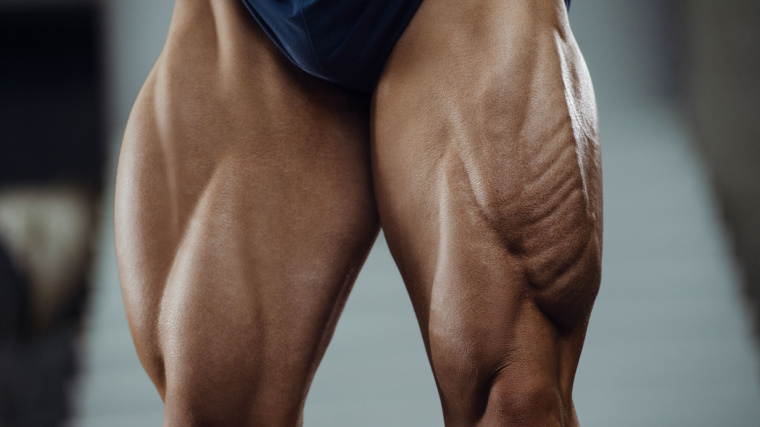
Credit: ALL best fitness is HERE / Shutterstock
As your sets and repetitions increase, metabolic byproducts (such as lactate) make subsequent repetitions more and more challenging. Similarly, damaged tissues are less able to contribute to the overall effort, intensifying the challenge on the remaining fibers as you wrap up a set.
After each hard workout, you’ll want to prioritize recovery. Getting adequate sleep, nutrition (particularly protein intake and a caloric surplus), and finding time to relax will work wonders for keeping your training intensity high and the pace of your recovery on point.
Leg hypertrophy is a long process. Over the course of your career in the gym, you’ll likely alternate through numerous different programs that include a wide array of leg exercises.
That said, there are some universal constants. Here is a list of leg day staples that you should rely on on a regular basis when designing your workout, and a sample leg workout for hypertrophy as well.
Sample Workout
- Back Squat: 4 x 8
- Leg Press: 3 x 8
- Dumbbell Romanian Deadlift: 3 x 10
- Single-Leg Hip Thrust: 2 x 12
- Leg Extension: 3 x 15
- Leg Curl: 3 x 15
Barbell Squat
Any barbell squat variation (particularly high-bar back squats) should be one of the longest running exercises in your program. While they are a compound exercise that demands a lot from your full body, they are also one of the most useful exercises in your repertoire.
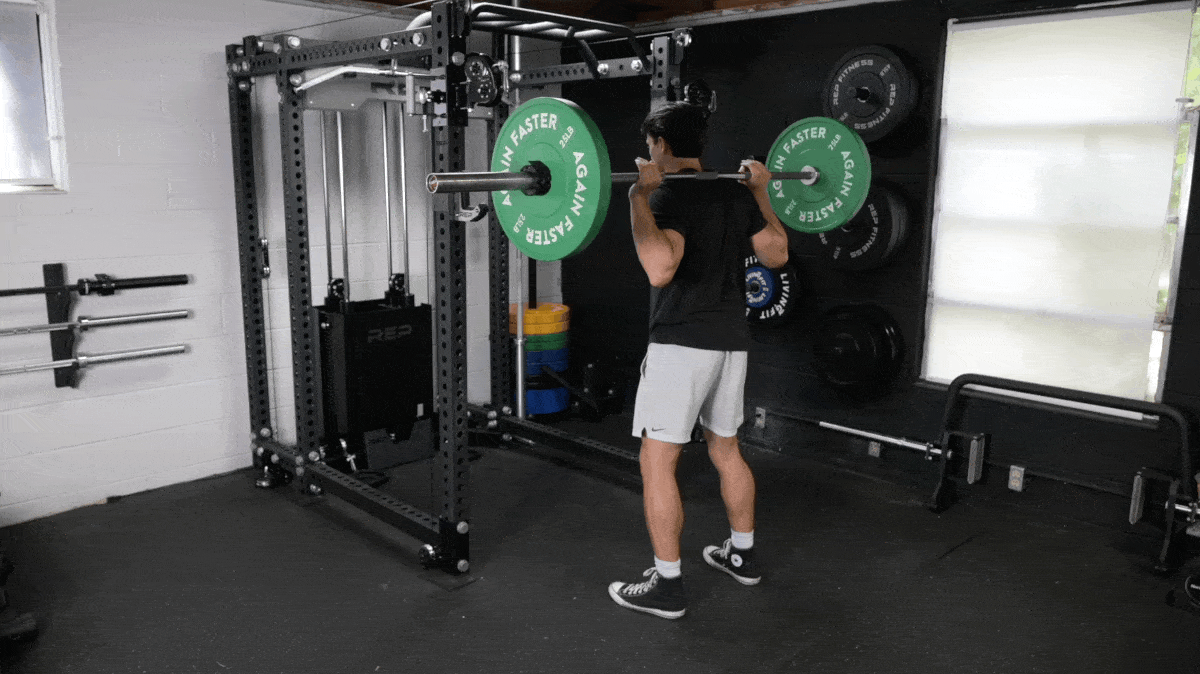
You can squat to build tremendous amounts of strength and hypertrophy, which may help avoid future plateaus for a longer period of time on many other leg exercises.
Hack Squat
The hack squat is a perfect barbell back squat alternative. This machine-based version of a back squat will allow you to absolutely push to failure in a much safer way than with a barbell.
Whether you include it as an accompanying exercise to your free-weight squats or as an altogether alternative, the hack squat will be another primary staple in your leg day arsenal.
Leg Extension
The leg extension is a universally renowned leg exercise for its ability to make your quads burn without remorse. The important thing to consider about the leg extension is that it can uniquely help train your rectus femoris (a specific muscle of the quadriceps) where the squat or hack squat cannot, simply due to the design of the machine itself.
Keep it in your back pocket to isolate your quads.
Romanian Deadlift
The Romanian deadlift is the perfect hinge variation to incorporate into your long-term leg day plans. It is a fantastic tool for building your glutes, hamstrings, and core, while also synergistically developing your strength.
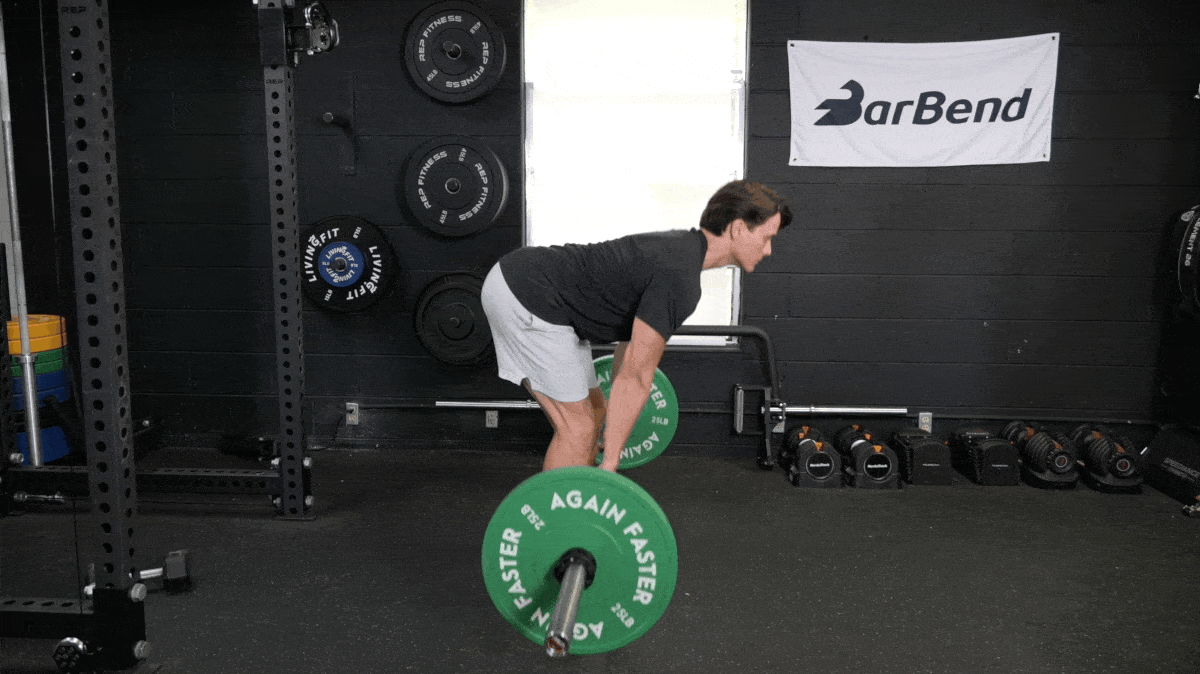
Romanian deadlifts are also a bit easier to recover from than standard deadlifts pulled from the floor, since you can’t lift quite as heavily and usually perform more reps per set.
Seated Leg Curl
The seated leg curl is a tried-and- true method for really boosting hamstring volume (and reaching muscle failure) in one of the safest ways possible.
This machine is particularly effective because it can be difficult to isolate your hamstrings with free weights. Once you’ve drained some of your gas tank on a heavy hinge, take a seat and grow.
Rear-Foot Elevated Split Squat
The rear-foot elevated split squat, also known as the Bulgarian split squat helps deliver many of the benefits of your barbell squat but allows you to keep some checks and balances (literally) in place on your legs.

You can use unilateral exercises like the rear-foot elevated split squat to attack your legs with less weight than the bilateral, double-legged version, and account for any strength or coordination discrepancies as well.
Walking Lunge
The walking lunge shares many of the benefits of the rear-foot elevated split squat, but can also be intensified to serve as a fantastic leg day finisher. A few sets of walking lunges to failure (or even as a drop set) can be the perfect capstone to your day.
Lunges are also useful as a technical primer during your warm-up. You need a good bit of neuromuscular coordination to get into a good lunging rhythm, so performing a few sets at the start of your workout can serve as a great way to get your head in the game (and increase blood flow to your legs).
Glute Bridge or Hip Thrust
The glute bridge or hip thrust (whether with a barbell or dumbbell) are great tools to target your glutes without as much spinal loading as a barbell squat or the sheer intensity of a hack squat.

Using the glute bridge or hip thrust with moderate weight and repetition ranges to start or finish your workout as either as part of a dynamic warm-up or finisher can really pump up the glutes.
Leg Hypertrophy Tips and Tricks
Training for muscle growth can be broken down pretty simply into eat, sleep, train, repeat. To dig a bit more into the finer details and help guide your decision-making on the gym floor, here are some tips and tricks to help you get the most out of each leg session.
Load It Up
You can stimulate leg hypertrophy across a wide variety of repetition and loading schemes; however, by training on the heavier side of things (think at or above 75 percent of your 1-repetition maximum (1RM), you can also gain significant strength over time.
This strength can help keep all of your lower body exercises progressing, so don’t be afraid to prioritize a heavier exercise or two, such as your squats or deadlifts.
Feel the Burn
Not every exercise can be loaded to the gills. You’d likely fatigue far sooner in the core or other muscles than just your legs, depending on the move. Instead, make sure you have a few exercises that really target the metabolic side of things.
Metabolic stress is the accumulation of that all too familiar burn when you’re performing higher repetitions. The accumulation of byproducts such as lactate from these often higher repetition sets can help stimulate enough of a challenge to grow while using lower absolute load.
Aim to hit muscular fatigue in your legs using a 10-15 repetition range on isolation exercises, accompanied by a vicious burn.
Go Unilateral
One of the most beneficial ways to grow your lower body is by harnessing the power of unilateral training. Exercises such as Bulgarian split squats, walking lunges, or single-leg machine work can ensure each side is getting its fair dose of stimulation.
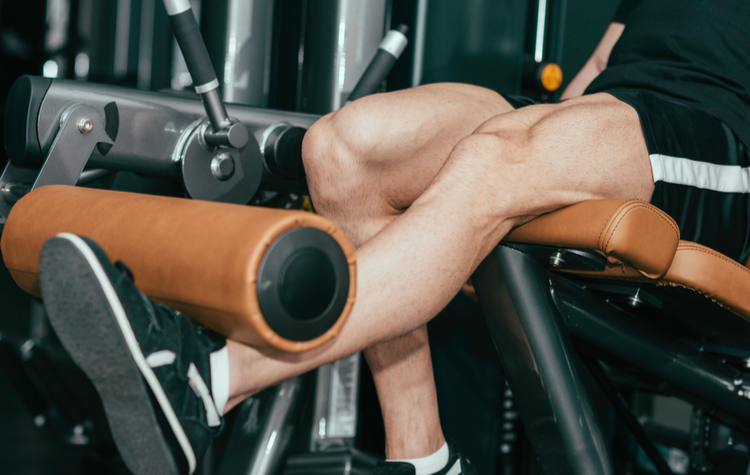
Credit: Microgen / Shutterstock
Alongside muscle growth, you can also use your unilateral work to avoid any strength or coordination imbalances while building your endurance as well.
Know Your Anatomy
A huge boost to the effectiveness of your leg hypertrophy training is to have a general understanding of your lower body anatomy. That way, you can avoid too many redundancies (such as overlapping exercises that work the same muscles in a similar fashion) in your program. Map out which exercises target your quads, hamstrings, glutes, adductors, and calves for the best results.
How to Program for Leg Hypertrophy
There are some excellent evidence-based training parameters carved out by coaches and clinicians that can help build your perfect leg day. Here are the major design elements that go into a hypertrophy-focused leg workout plan.
Intensity for Leg Hypertrophy
Muscle growth has been shown to be effective between a wide range of training intensities, presuming each set is taken close to muscle failure. (1) In terms of growing your legs, a good rule of thumb would be to diversify which percentage of your 1-repetition max you’ll utilize based upon the exercise or goal.
For muscle growth and strength using a barbell, aim for 80 percent 1RM or higher (likely around 6 or fewer repetitions per set). (2) For your smaller muscle groups or machine-based exercises, aiming for a repetition range of 8-12 or even higher is a good choice. This would fall at a much lower percentage of your 1RM, but on these exercises you can use an RPE, or rating of perceived exertion, style to gauge your effort.
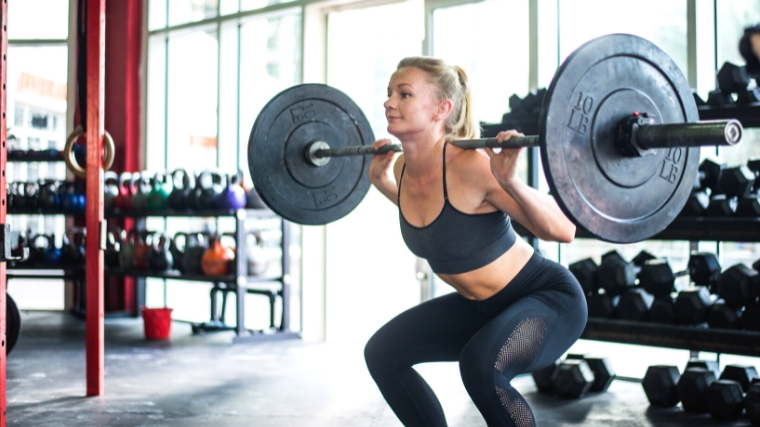
Credit: oneinchpunch / Shutterstock
Keep your intensity high (within 0-3 repetitions from failure) and you should be golden regardless of how you measure your efforts. (3)
Volume for Leg Hypertrophy
Slowly increasing weekly training volume is a good way to make long-term progress. While there is a reasonable limit on how much volume you can add per week, it seems like 10 hard sets (sets taken close to muscle failure) per muscle group is an excellent starting point. (4)
Going even higher through combined compound and isolation exercises (up to 15-20 sets per week) may have additional benefits, (5) but you must also be able to fit this into your program. Aim for at least 10 and then tailor your program by incrementally adding volume over time if needed.
Frequency for Leg Hypertrophy
Recent literature suggests that as long as you keep your total weekly training volume consistent, training frequency doesn’t generally make a huge difference in your results. Regardless of whether you perform a single-session bro-split or hit up 2-3 leg days per week, hit your total weekly volume goal and you should be fine. (6)

Credit: Kristian Ezcurra / Shutterstock
With that in mind, there still may be benefits to breaking your training frequency up from a logistical standpoint. Higher frequencies of training may still help with time management or recovery and, at the very least, provide the same overall muscle growth. (7)
Common Leg Hypertrophy Mistakes
There are some recurring patterns or bad habits in many leg day programs that may be hampering your progress. Here are some common mistakes and how to fix them.
Too Many Compound Exercises
A compound exercise such as a squat or leg press recruits a ton of muscle mass. The drawback, however, is the amount of fatigue you may accumulate en route to stimulating leg growth.
Stringing together several big compound exercises may make it harder to complete your leg workouts due to excessive fatigue. Your core, back, grip, or even lungs may begin to fatigue before your legs, dampening your ability to focus on the muscles that matter.
The Fix
Choose 1-2 major compound exercises to focus on per leg day. Leading with your hardest exercise (for example, a squat or deadlift) will help drive full body strength and hypertrophy, and from there you can diverge into smaller exercises. Unilateral work and machines can be extremely effective here in the middle and end of your leg workouts, respectively.
Not Enough Compound Exercises
Unilateral, machine, and single-joint exercises are great at really zeroing in on individual muscles; but avoiding compound exercises altogether can likely leave some growth potential untapped.
Compound exercises are one of your greatest tools for improving full-body strength. You can then leverage that strength into improving how much load you can use on other exercises over time. In this way, compound exercises build some muscle themselves while also helping to boost the gains from other exercises down the line.
The Fix
Finding a middle ground between multi-joint and isolation exercises is key. The big compound exercises are often the most loadable, which pays huge dividends for growth and strength development — try to keep 1-2 in your program per day.
Volume Overkill
Your actual training only is one aspect of building a great set of legs. The ability to recover from each session is the other half of the equation. While you should cross the 10-set threshold on a weekly basis for optimal growth, (4) you should avoid arbitrarily pushing more and more sets into your routine.
The Fix
Your leg training frequency may not directly impact your results long term (as long as you’re hitting enough volume on a regular basis), but you should still consider utilizing a split to guarantee you’re not overkilling your legs. Think of splitting your weekly volume into two leg days to assure you’ll always have the proper recovery between sessions for maximal growth.
Not Enough Intensity
Training close to muscular failure is a must for growth, but the legs are notorious for being extremely challenging. Regardless of how close you come to failure, a lot of lower body exercises can challenge your pain tolerance, or even induce performance anxiety (think lining up a heavy set of squats).
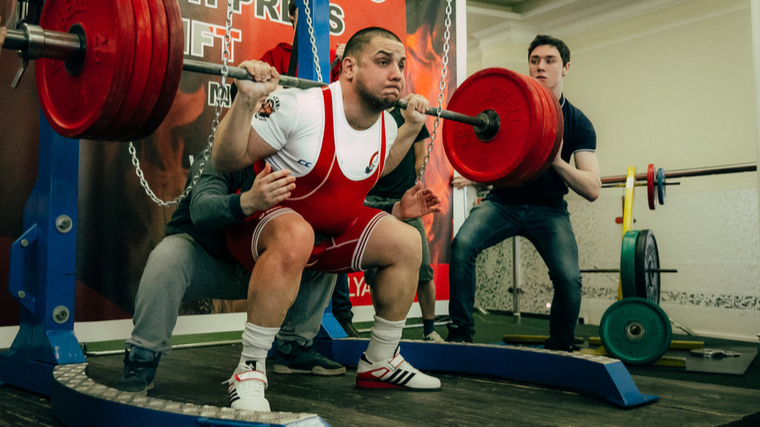
Credit: sportpoint / Shutterstock
It has been observed that lifters can often display inaccuracy with their assessments of proximity to failure — particularly with high-repetition sets (8). As hypertrophy training often draws upon moderate-to-higher repetition sets for large sections of programming, sandbagging can easily become a problem.
The Fix
Machines are your best friend here. You can generally scale your large compound lifts off a percentage of your max to keep a reasonable intensity, but machines can be safely taken to failure. Keeping an assortment of exercises such as leg extensions, hamstring curls, or other machine-based options will allow you to test yourself and really strive for failure with minimal risk.
Your Takeaways
Training your legs should be a high priority, and a strong emphasis should be made on keeping your volume and intensity high. To best hit every muscle group with the proper amount of stimulation, splitting your program into two distinct leg days is highly recommended.
- Aim for 10 or more working sets per muscle group per week.
- Keep 1-2 compound exercises on each leg day.
- Compound exercises should be loaded around 80 percent of your max, or higher.
- Finish your days with isolation exercises (machines or unilateral work), leaving 0-3 repetitions in the tank.
More Training Content
- The Big Guide to Muscle Hypertrophy
- Don’t Skip Leg Day. The 16 Best Leg Exercises for Muscle and Strength
- How to Gain Muscle – A Guide to Eating for Mass
References
- Schoenfeld, B. J., Grgic, J., Van Every, D. W., & Plotkin, D. L. (2021). Loading Recommendations for Muscle Strength, Hypertrophy, and Local Endurance: A Re-Examination of the Repetition Continuum. Sports (Basel, Switzerland), 9(2), 32.
- Baechle, T. (1989). Essentials of strength training and conditioning (4th ed.). Human Kinetics.
- Refalo, M. C., Helms, E. R., Trexler, E. T., Hamilton, D. L., & Fyfe, J. J. (2022). Influence of Resistance Training Proximity-to-Failure on Skeletal Muscle Hypertrophy: A Systematic Review with Meta-analysis. Sports medicine (Auckland, N.Z.), 10.1007/s40279-022-01784-y. Advance online publication.
- Schoenfeld, B. J., Ogborn, D., & Krieger, J. W. (2017). Dose-response relationship between weekly resistance training volume and increases in muscle mass: A systematic review and meta-analysis. Journal of sports sciences, 35(11), 1073–1082.
- Brigatto, F. A., Lima, L. E. M., Germano, M. D., Aoki, M. S., Braz, T. V., & Lopes, C. R. (2022). High Resistance-Training Volume Enhances Muscle Thickness in Resistance-Trained Men. Journal of strength and conditioning research, 36(1), 22–30.
- Grgic, J., Schoenfeld, B. J., & Latella, C. (2019). Resistance training frequency and skeletal muscle hypertrophy: A review of available evidence. Journal of science and medicine in sport, 22(3), 361–370.
- Schoenfeld, B. J., Ogborn, D., & Krieger, J. W. (2016). Effects of Resistance Training Frequency on Measures of Muscle Hypertrophy: A Systematic Review and Meta-Analysis. Sports medicine (Auckland, N.Z.), 46(11), 1689–1697.
- Barbosa-Netto, S., d’Acelino-E-Porto, O. S., & Almeida, M. B. (2021). Self-Selected Resistance Exercise Load: Implications for Research and Prescription. Journal of strength and conditioning research, 35(Suppl 1), S166–S172.
Featured Image: ALL best fitness is HERE / Shutterstock